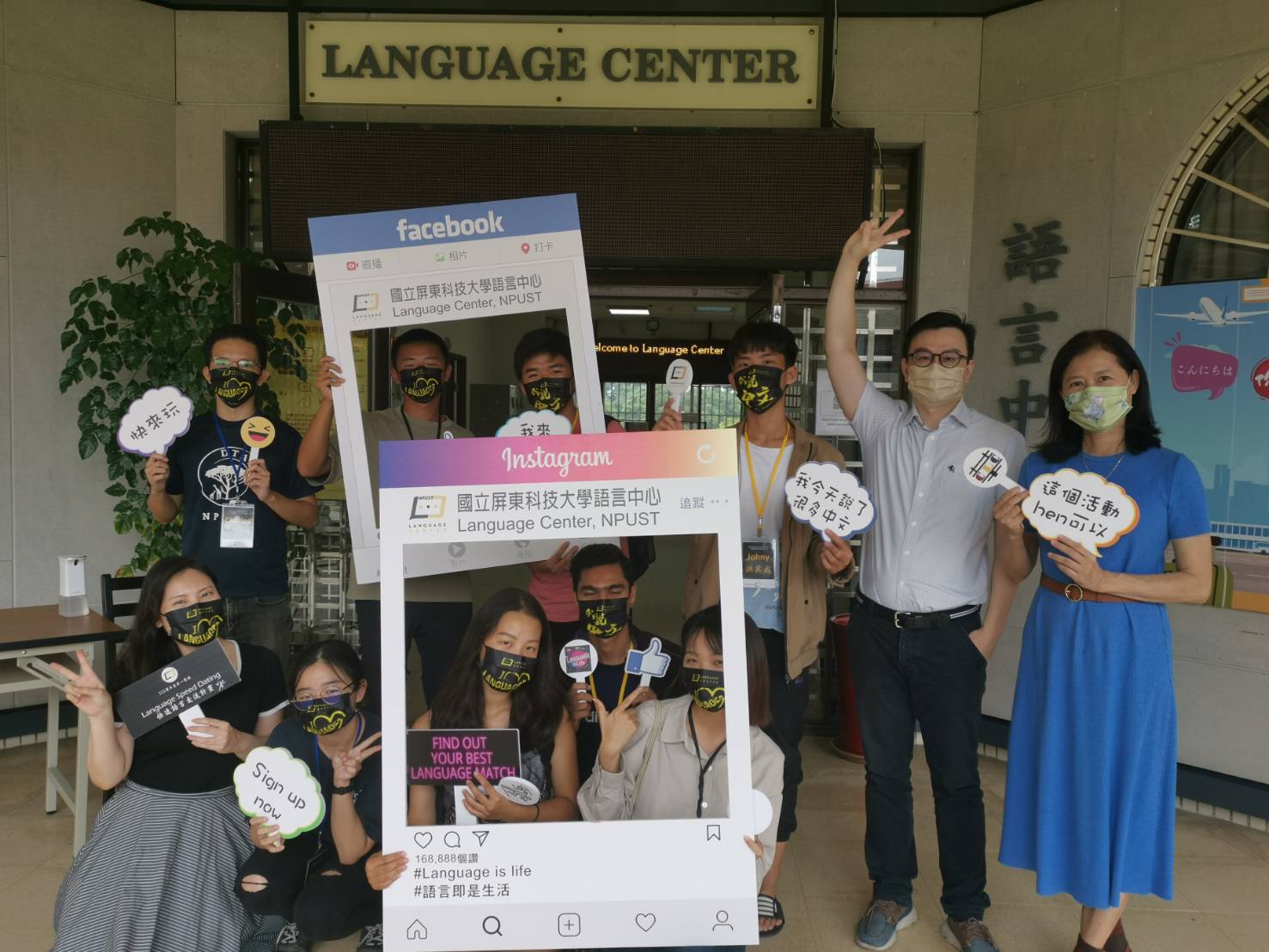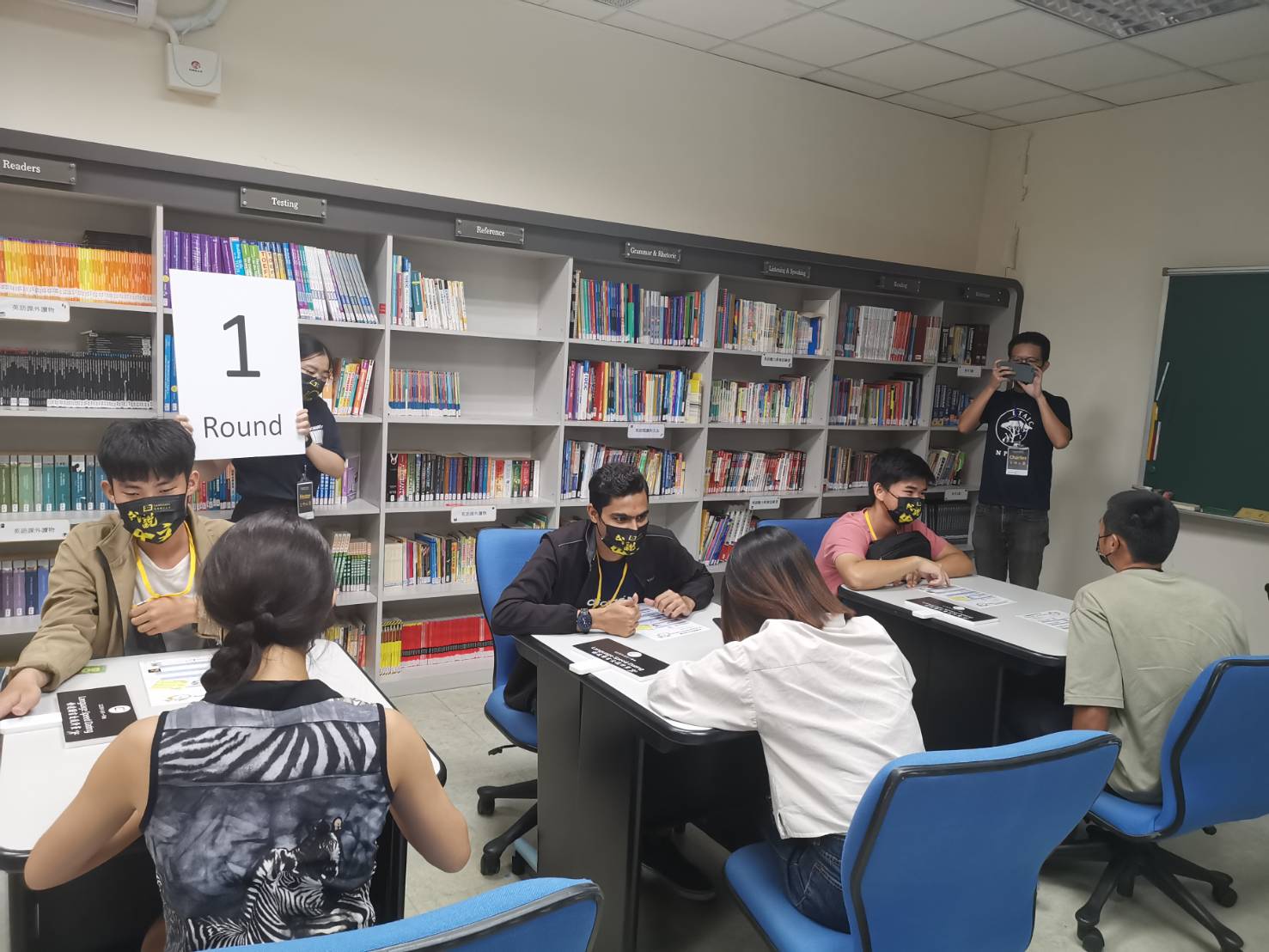Abstract
Our program on bilingual education aims to enhance and gradually improve the bilingual teaching environment within the university through students, teachers, and courses so as to combine the internationalization of school development and the United Nations' 2030 Sustainable Development Goals (SDGs). Furthermore, it is hoped that the University will be an impactful indicator university and an important base for cultivating and producing international talents. Since 2021, the University has implemented the program for one year with a subsidy from the Ministry of Education (MOE), and the preliminary outcomes are presented mainly by three aspects, student-centered learning, teacher support, and curriculum optimization, as follows:
- Student-centered Learning
In order to create a student-centered bilingual learning environment, the University has been committed to promoting and improving students' English proficiency since the academic year 2021, and the relevant measures include the following:
- Organize writing workshops to recruit and train eight writing assistants.
- Incorporate international students into classrooms and engage them in oral English teaching: based on course content, international students are incorporated into intermediate and advanced English listening and speaking class with local students for oral communication.
- Incorporate basic writing into upper-intermediate and advanced English reading class to cultivate students’ basic writing knowledge and skills.
The design and planning of the courses not only strengthen students’ oral and writing skills, but continues to enhance their listening and reading skills. Moreover, through English language enhancement courses, such as elective basic English listening, grammar and vocabulary courses, advanced TOEIC listening course, TOEIC course, etc., the results of pre-and post-tests of our freshmen on general English proficiency based on different departments show that their English listening and reading proficiency increases at a rate of 8% to 21% in the academic year 2021 (Please refer to the analysis in the text for more details).
- Teacher Support
In order to encourage our faculty members to offer relevant professional bilingual courses and help them build teaching capacity in EMI, an all-English teaching advisory committee was formed, and a set of subsidized regulations were established and approved to reward faculty members for teaching in all English in the beginning of implementing the program. In addition, nine EMI relevant lectures were held, three teacher certification courses were organized in cooperation with Wenzao Ursuline University of Languages, and an online certification course in EMI skills by Cambridge English Assessment was also offered to support our faculty members for their professional English teaching knowledge and abilities.
- Curriculum Optimization
In addition to strengthening students’ listening and reading skills and actively enhancing their speaking and writing skills to prepare them for future bilingual courses, the all-English teaching advisory committee discusses and takes relevant measures to adjust the teaching methods of the existing compulsory English courses to promote and improve students’ English proficiency. The measures include adopting all-English teaching and incorporating international students into advanced English listening and speaking (A3) class to engage students in oral communication through various communicative activities and incorporating basic writing into upper-intermediate and advanced English reading (A3/A4) class. In this academic year, the percentage of adopting all-English teaching in compulsory English courses reached 6.58%. Furthermore, a total of 227 students took and participated in ESP/EAP courses, such as “Advanced English Speaking and Writing”, “Self-Marketing and English Presentation Skills”, “Young Adult Fiction”, “English Picture Books and Oral Training”, “English for Science and Technology”, “Advanced English Listening”, and “Elite English”, especially offered for students with upper-intermediate level to prepare them for bilingual courses. The EMI performance indicators for sophomores and first-year master’s students who took at least one EMI course are 6.04% and 21.67% respectively, both of which exceed the performance targets set for the academic year 2021 (3% for sophomores and 12% for first-year master’s students).
- University-level Support
In addition to the above-mentioned items, our administrative units also provide horizontal support in line with the University’s characteristic development, including the allocation of funds by the Interdisciplinary Feature Development Center to support professional English micro programs and courses incorporating innovative teaching and EMI. Moreover, the Center for Teaching Excellence also supports the establishment of “EMIのP2O Professional Growth Community for all-English teaching Teachers” and a series of EMI related teacher growth workshops and seminars.
The above-mentioned implementation and details are all organized by the Language Center. The center holds regular internal group meetings and irregular university-level consultation meetings as needed to discuss implementation details with relevant units. After the program is implemented for one year, the directors of our university-level units, such as the Office of Academic Affairs, the Office of International Affairs, the Interdisciplinary Feature Development Center, the Center for Teaching Excellence, etc., review the performance indicators and their achievement set for the academic year 2021 one by one and offer consultation and suggestions for the self-evaluation committee of bilingual education program. The suggestions are summarized as follows: 1. All-English teaching on freshman English courses still needs to be carried out step by step based on students’ levels of English proficiency. However, when instructors adopt all-English teaching in class, they should carefully consider students’ English proficiency levels and collect feedback from students to adjust their teaching. 2. The general English proficiency test for freshmen should be carried out continuously, so as to examine the effectiveness of English teaching and provide the test results to all departments as a reference for EMI curriculum planning. 3. A set of more comprehensive elective ESP/EAP courses should be offered to help students adapt to the EMI professional courses offered by each department. 4. When instructors in each department try to adopt all-English teaching in professional courses, they should bear in mind that the requirement for English language proficiency should not decrease students’ learning motivation towards professional knowledge and abilities. In the classroom, students should be allowed to use their first language as learning scaffolding for debate and discussion as needed to decrease their anxiety about using English. The above suggestions will be incorporated as reference to the promotion of our program on bilingual education to continuously improve the effectiveness and efficiency of implementation.
Overall, our program on bilingual education has been successfully launched in this academic year, and the short-term goals have been achieved. We believe that the medium and long-term goals will gradually be achieved with consistency.

